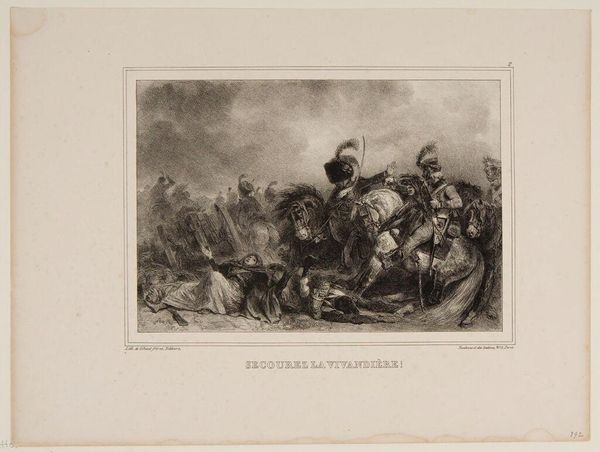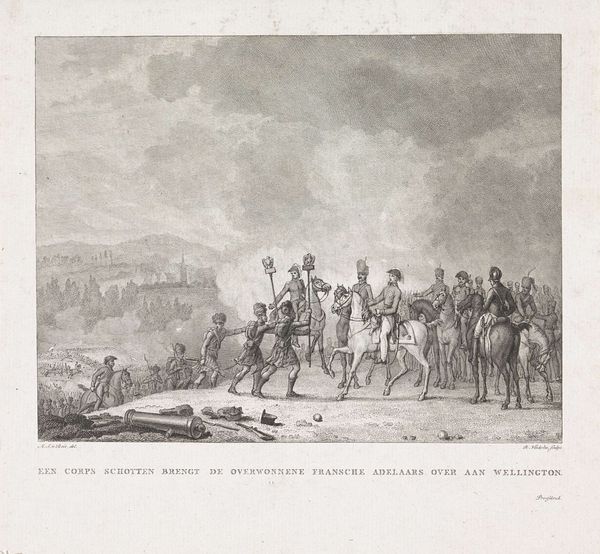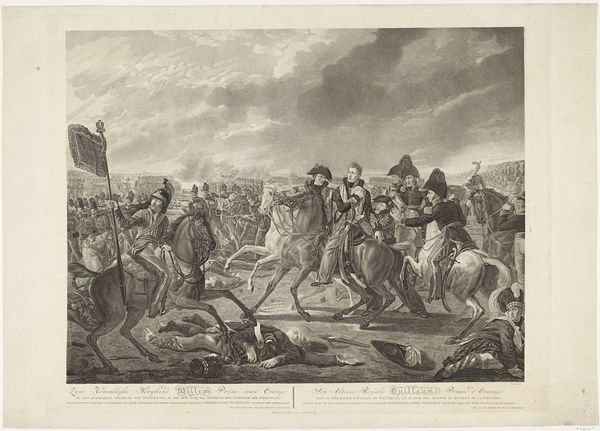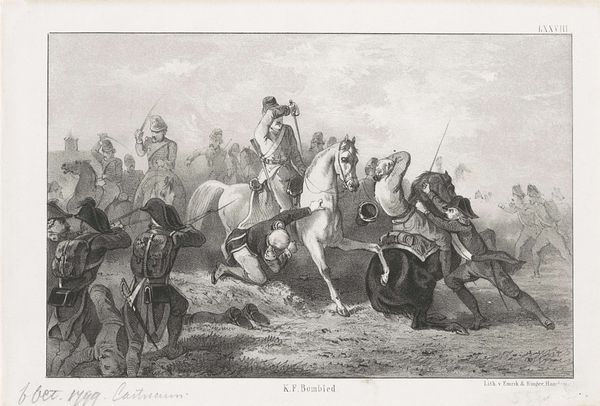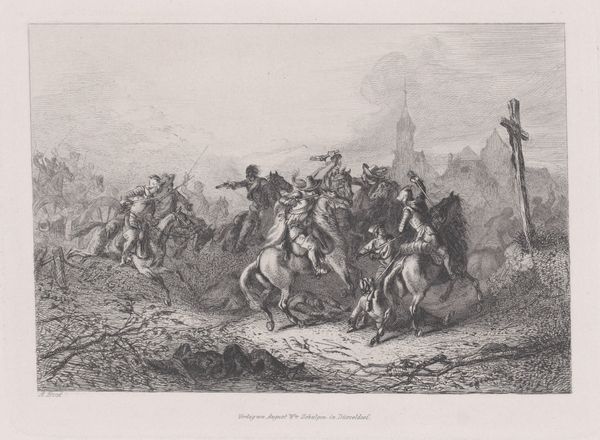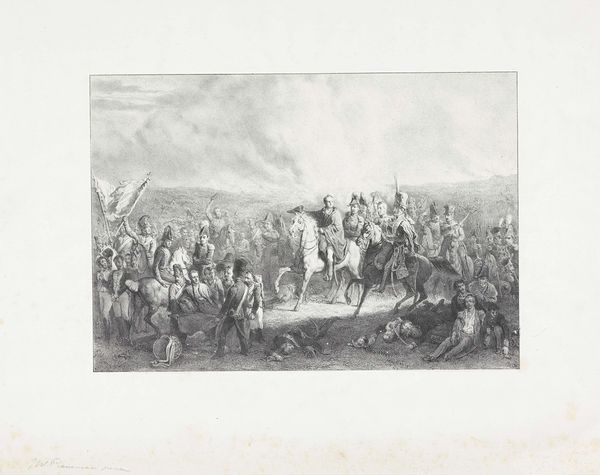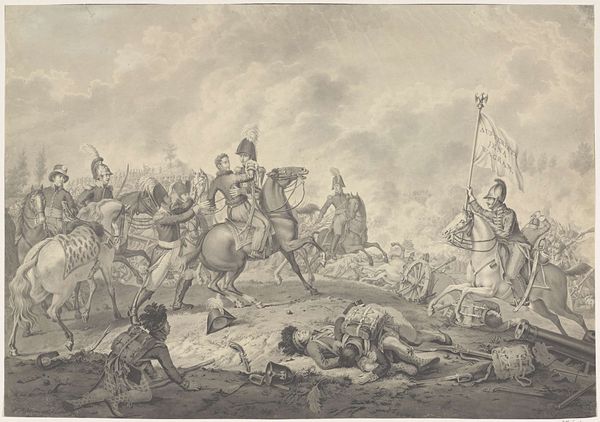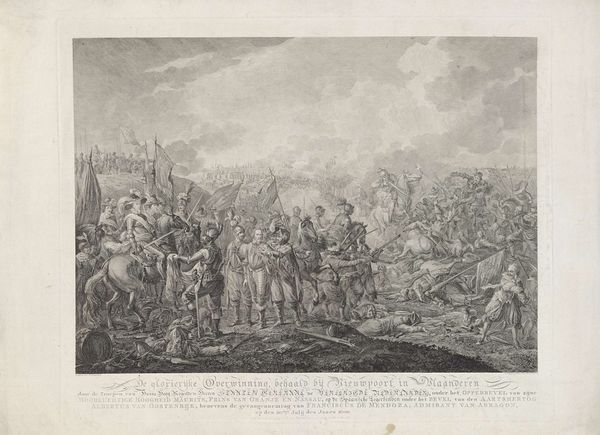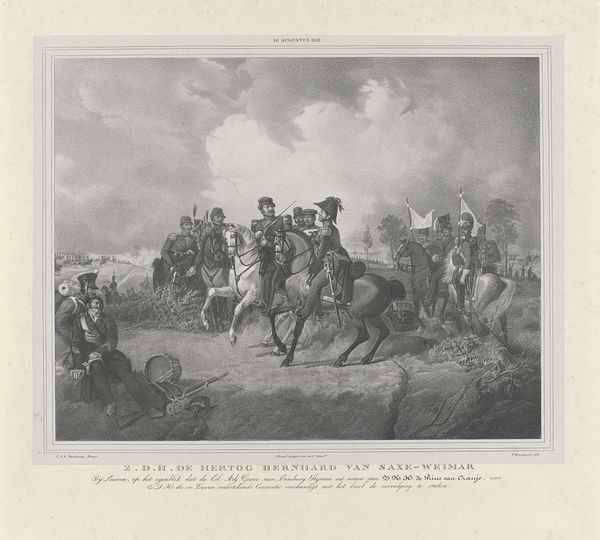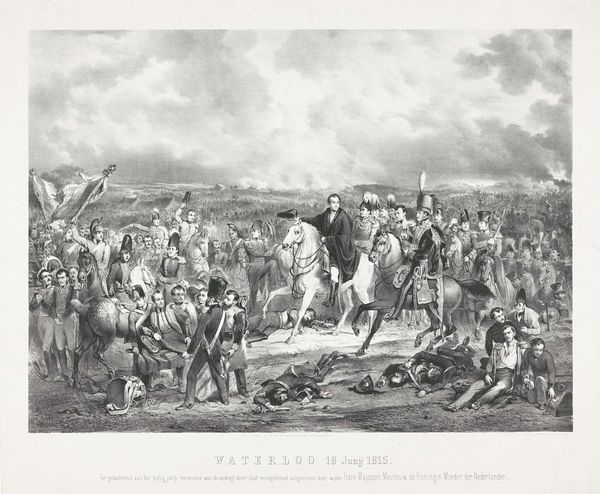
Copyright: CC0 1.0
Curator: This is Jean Godefroy's "Battle of Austerlitz," housed here at the Harvard Art Museums. It captures a pivotal moment in Napoleonic history. Editor: My initial sense is one of controlled chaos. The way the light falls on Napoleon, framed by the carnage, creates a powerful focal point. Curator: Indeed. The battle itself became a symbol of Napoleon's strategic genius and imperial power. It shaped the political landscape of Europe. Editor: Symbolically, the fallen soldiers contrast sharply with Napoleon's heroic posture. It suggests the human cost of ambition and the fleeting nature of glory. Curator: Consider how Godefroy's choice of imagery helped solidify Napoleon's image as a divinely favored leader, a crucial aspect of his regime's propaganda. Editor: And the arrangement of figures, almost like a theatrical stage, emphasizes the performative aspects of power and the creation of a lasting legend. Curator: Absolutely. Godefroy's work is a testament to how art can be deployed to shape public memory and legitimize political authority. Editor: Ultimately, a powerful meditation on victory, sacrifice, and the enduring allure of symbolic representation. Curator: An apt summary. A potent reminder of the relationship between art, power, and the construction of historical narratives.
Comments
No comments
Be the first to comment and join the conversation on the ultimate creative platform.
